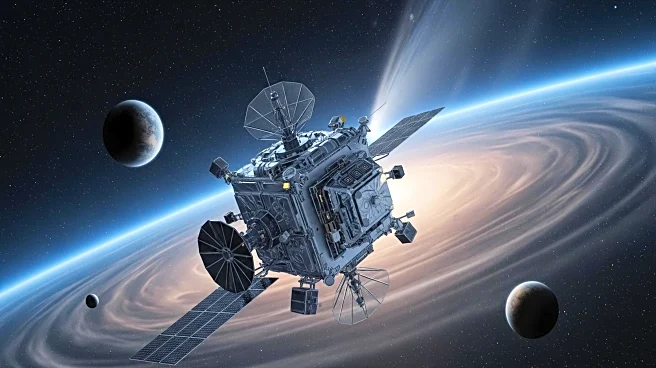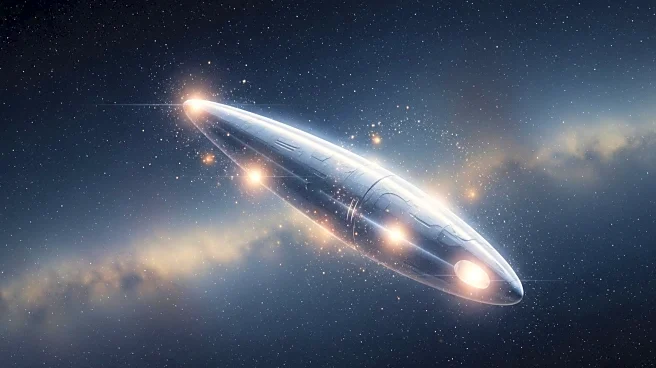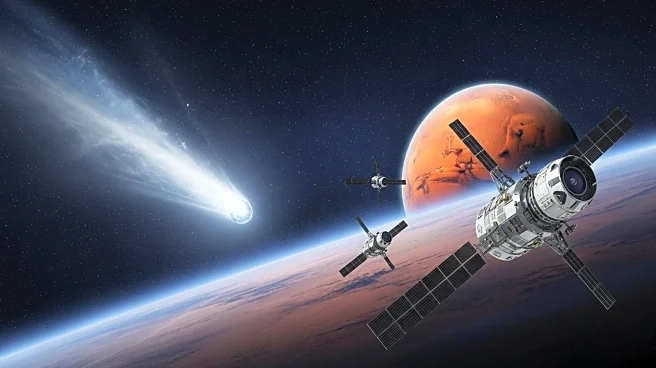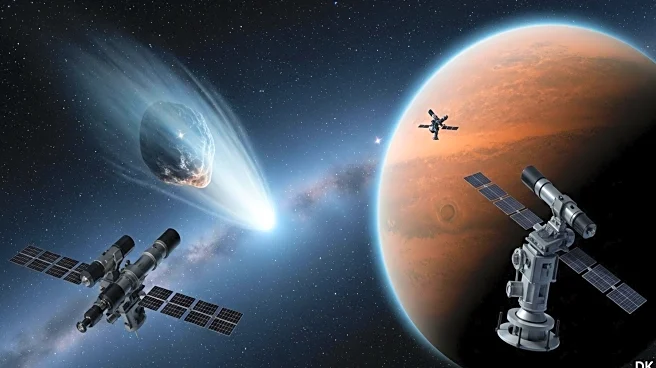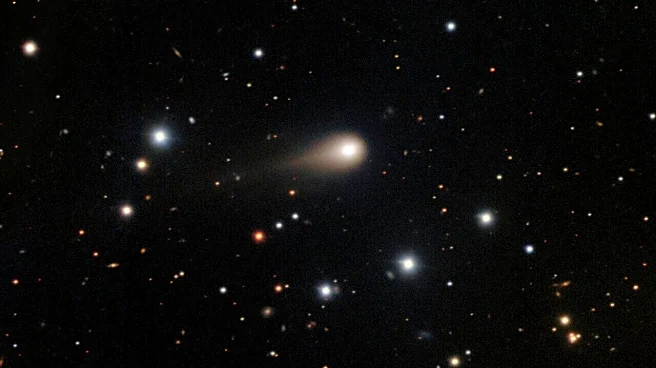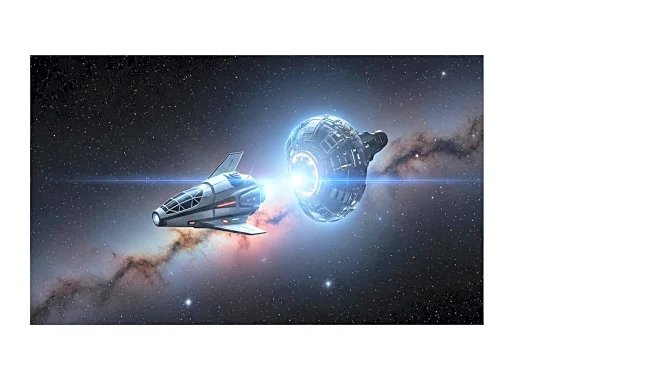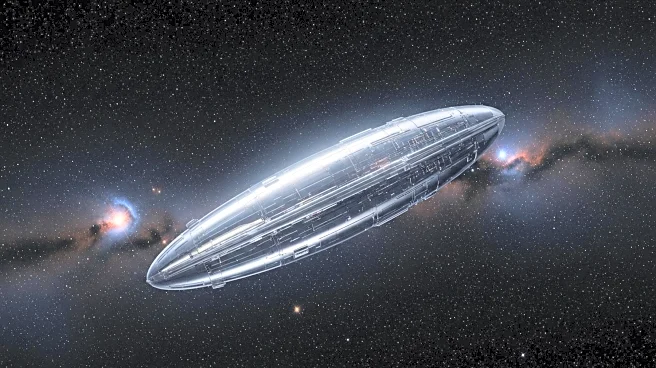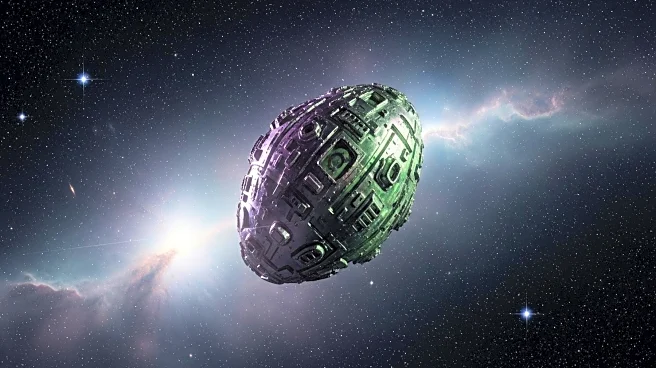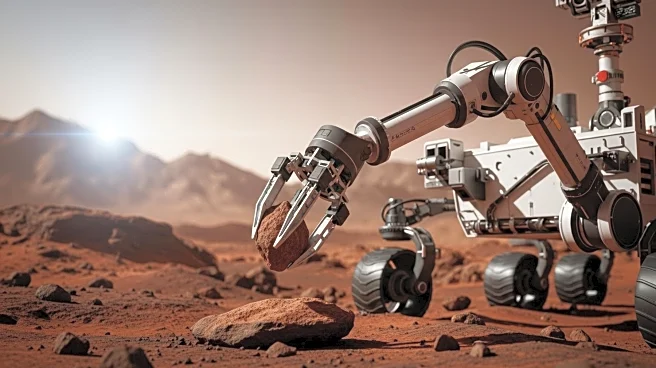What's Happening?
NASA and the European Space Agency (ESA) have confirmed that the interstellar comet 3I/ATLAS, detected by NASA's ATLAS telescope, poses no threat to Earth. The comet, traveling at a speed of 210,000 kilometers per hour, is the fastest recorded for a solar system visitor. It will reach its closest approach to the Sun on October 30, 2025, at a distance of about 210 million kilometers, just inside the orbit of Mars. Hubble's observations have allowed astronomers to estimate the comet's size, with an upper limit of 3.5 miles in diameter. Despite rumors circulating on social media about the comet being a threat or an alien spacecraft, both NASA and ESA have assured that its closest distance to Earth was more than 2.5 times that between Earth and the Sun.
Why It's Important?
The confirmation that comet 3I/ATLAS poses no threat to Earth is significant as it dispels widespread rumors and misinformation circulating online. This event highlights the importance of scientific communication and the role of space agencies in providing accurate information to the public. The comet's passage offers a rare opportunity for scientists to study an interstellar visitor, potentially advancing our understanding of such objects and their characteristics. The study of 3I/ATLAS could provide insights into the composition and behavior of comets originating from outside our solar system, contributing to the broader field of astronomy and space exploration.
What's Next?
As comet 3I/ATLAS approaches the Sun, continued observations by NASA and ESA will likely provide further data on its composition and trajectory. Scientists may use this opportunity to refine models of interstellar comet behavior and improve detection methods for future objects. The findings could influence future space missions aimed at studying interstellar phenomena. Additionally, the event may prompt discussions on the importance of addressing misinformation related to space events, emphasizing the need for clear communication from scientific institutions.
Beyond the Headlines
The event underscores the challenges posed by misinformation in the digital age, particularly concerning scientific phenomena. It highlights the need for robust fact-checking mechanisms and the role of media literacy in helping the public discern credible information. The comet's journey through the solar system also serves as a reminder of the vastness and complexity of space, encouraging continued investment in space exploration and research.

